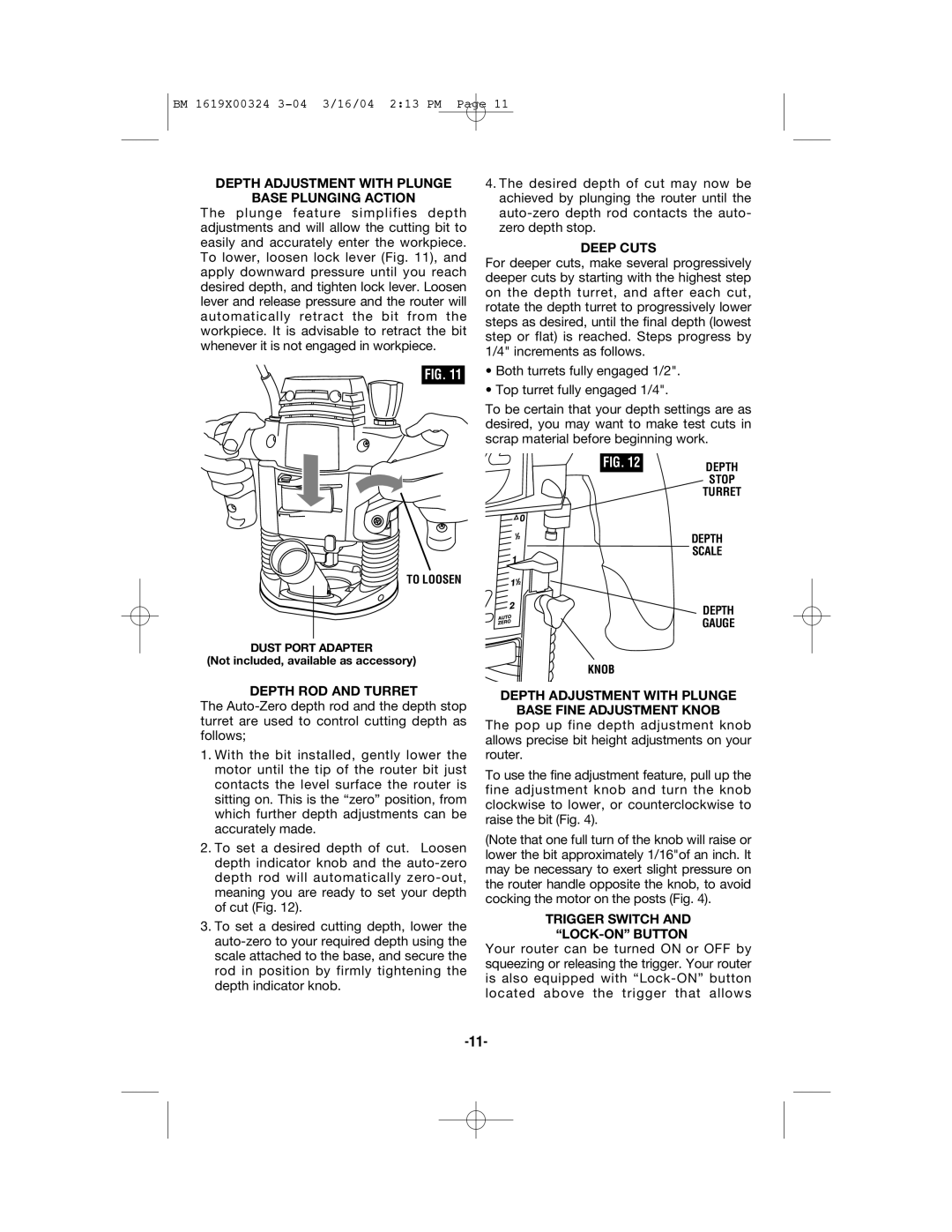1815, 1825, 1820, 1810 specifications
The Skil 1810, 1820, 1825, and 1815 are a series of power tools designed to meet the demands of both professionals and DIY enthusiasts. Each model offers unique features that cater to specific needs while maintaining Skil's reputation for quality and reliability.The Skil 1810 is known for its versatility as an impact drill. It features a powerful motor that delivers high torque, making it ideal for drilling into various materials such as wood, metal, and masonry. One of its standout technologies is the variable speed control, allowing users to adjust the speed to suit the task at hand. Additionally, the 1810 is equipped with a robust keyless chuck, ensuring easy bit changes and secure gripping.
Moving on to the Skil 1820, this model incorporates advanced electronics that enhance performance and user experience. Its electronic feedback system helps maintain consistent power under load, ensuring efficient drilling and driving. The 1820 also boasts an integrated LED light, illuminating work areas in dim lighting conditions. This feature is particularly valuable for tasks that require precision and visibility, such as drilling in tight spaces.
The Skil 1825 builds on the strengths of its predecessors and introduces even greater functionality. It includes a hammer drill feature, enabling users to tackle tougher materials with ease. This dual-function capability allows for both drilling and hammering action, making it a versatile tool for various applications. The 1825 also features an ergonomic design, providing increased comfort during extended use and reducing user fatigue.
Lastly, the Skil 1815 offers a more compact option while still delivering powerful performance. This model is particularly well-suited for users who require a lightweight tool for overhead or precision work. It retains many essential features found in the other models, such as variable speed control and a keyless chuck. Its design ensures that it remains easy to maneuver without sacrificing power or effectiveness.
In summary, the Skil 1810, 1820, 1825, and 1815 represent a range of power tools that highlight Skil's commitment to innovation and user satisfaction. Each model is designed with distinct features and technologies, making them suitable for different applications and user preferences. Whether it's versatility, advanced electronics, hammer drill capability, or compact design, Skil provides options that cater to a variety of needs in the realm of power tools.

